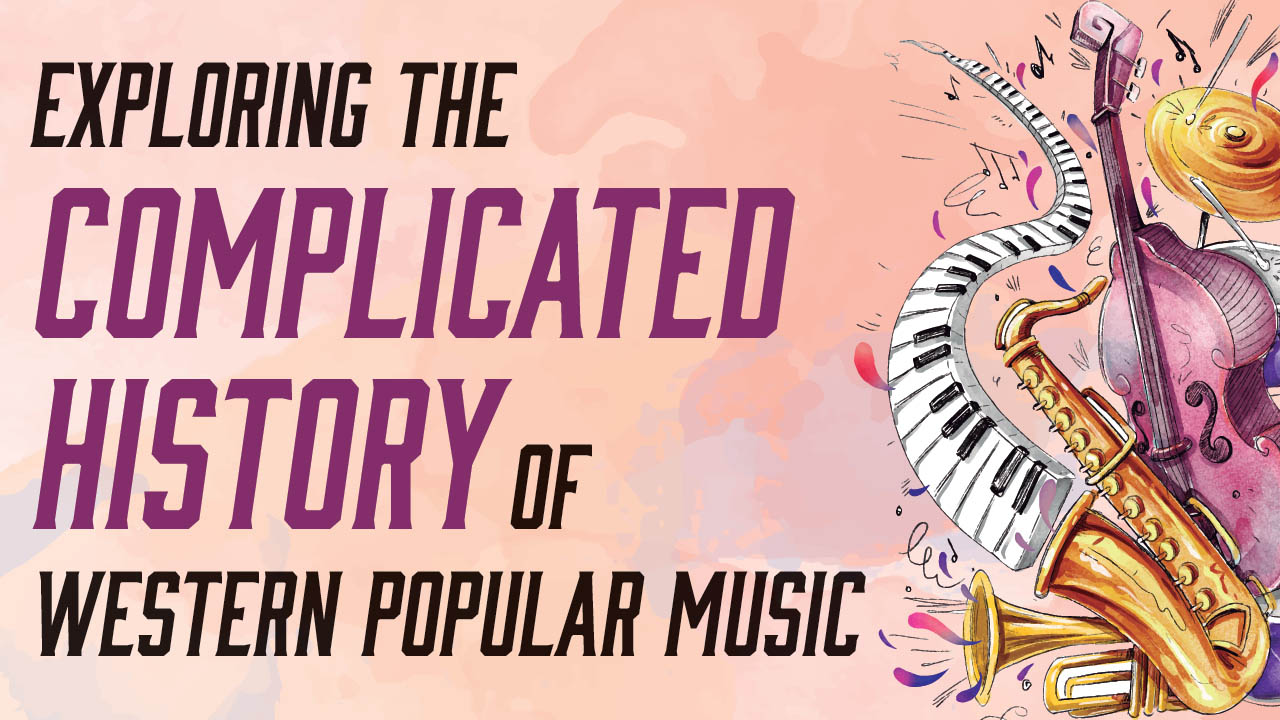Exploring the complicated history of Western popular music
 CREDIT: FSU PUBLICATIONS AND COMMUNICATIONS DEPARTMENT.
CREDIT: FSU PUBLICATIONS AND COMMUNICATIONS DEPARTMENT.Music is a way of shaping culture and forming connections. Most of us at least know parts of the short yet complicated history of American popular music but the diverse influences that shaped the ideas of modern musical sound are relatively unknown to the average joe.
Even before recorded music became the primary means of listening to music, innovative classical composers took inspiration from folk and Eastern roots. Antonin Dvořák was a Czech classical composer and former director of the defunct National Conservatory of Music of America (1892-1895) who took a lot of inspiration from his Bohemian roots in his symphonies and string quartets. Franzt Liszt, a Hungarian classical composer known for his impressive body of notoriously difficult and showy piano pieces, was influenced by Hungarian folk music when writing his music.
Before the turn of the 20th century, a lot of music played in classical circles held influences from the Folk tradition of various cultures but was implemented into forms that were easier to digest for the upper class (the sole patrons who could afford to listen to performances of classical music). However, with the invention of the gramophone and the radio, the history of popular music was forever changed. Music was now accessible to the average household and could be distributed to millions of people around the world. This laid the groundwork for a musician to become a megastar and the history of popular music as we now know it had begun.
What’s little known about the early roots of popular music however is that Black music has always been at the forefront of innovation and that modern pop actually originated with Tsarist Russia. Jewish immigrants, like the parents of George Gershwin and Irving Berlin, fled from Russia and Europe after the first World War. These artists started many innovations in musical styles that they independently developed from Jewish traditions but also brought influences from the Black artists they met in bars around America. Scott Joplin, Louis Armstrong, and Duke Ellington were some of those artists popularizing styles of music developed from the Black communities at the time such as jazz and ragtime from their shows playing in speakeasies (bars owned by the American Mob) during the period of Prohibition. These shows were often inspirations for white artists like Gershwin and his contemporaries who attended those shows and incorporated what they heard in their compositions and played their music to white, middle-class or upper-class audiences.
At the time, only few American households could afford to see live performances, but many more could afford a gramophone. Recordings of music for lower class families came from another method, radio. Recordings of music were still in their infancies but just shortly after the first World War, radio ushered in a golden age where millions of listeners could afford to listen and contribute to a musical economy. Although with the unequal civil liberties given to musicians of different races, it was still hard for Black musicians to make it.
After the first World War there was a sharp rise in antisemitism. Despite this, Jewish musicians could still afford to make it big in the music world because many of them blended in with the rest of the white communities in America. It was rare for a Black musician to cross racial boundaries and even then, they were afforded limited opportunities compared to white musicians. Race Music, a category used on radio stations to refer to music made by Black people, was a common category used to separate the works of Black musicians from white musicians and it was only after the civil rights movement had ramped up that radio stations had thought to remove the category and include Black musicians who wrote blues music in other categories. Joplin, Ellington and Armstrong also had the benefit of working in genres that upper class families quickly adopted like jazz and ragtime, as blues was more popular in rural communities.
Blues, ragtime, jazz and rock n’ roll were all genres popularized in early Black communities and spread by talented Black musicians. Throughout the history of pop music, innovative Black musicians were later copied by white musicians that performed the styles and made more profits because they could perform to white audiences. Elvis Presley, who became known as “The King of Rock n’ Roll” was a central figure in the genre, a phenomenon started by Black musicians.
Just after the civil rights movement came the onset of musicians from Europe including British bands like The Beatles and The Rolling Stones, and a new generation of American songwriters starting their own hit factories like Motown Records. The Beatles innovated recording technology with recordings like “Strawberry Fields” and Motown was one of the most successful Black-owned businesses and independent record companies in the world.
Today, with genres like hip-hop and pop having dominated the early 21st century, we can thank these early musicians who moved the needle forward for music to become more diverse.

















